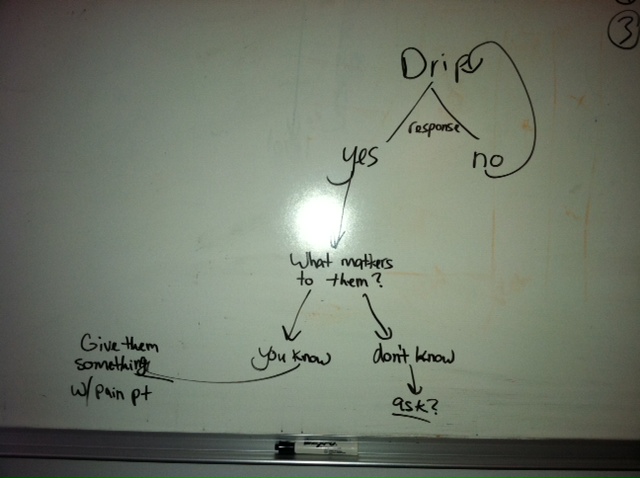This is the first post in a seven part series on Key Client Management Lessons.
Lesson #1: Lead, Don't Follow
Intuition tells us that the customer is always right, that good customer service is giving the customer what they want.
Whenever I hear this I think about a quote I read from Steve Jobs.
A while back somebody asked him if he had done any market research while he was building one of his products (I believe the iPod). His answer was no way. He said:
"It isn't the consumer's job to know what they want."
I love this quote. In my experience, I've found that this is absolutely true; most clients have no idea what they really want. In fact, even you probably don't truly know what they want or at least not what they're going to want.
In order to truly serve a client you need to have the flexibility to be ahead of the market. And to do this, you need to create an environment with the client where you can do what you do well, where you can lead, where you can innovate.
Remember that you are the expert in your field, you're better at what you do than they are, that's why they 've chosen to outsource to you.
The best relationships are the relationships where a client leans on you for your expertise. To create this type of relationship, do these four things right up front:
- Specifically define your area of expertise for the client (where you're going to lead)
- Define the metrics you use to determine success in that area
- Set goals for each metric and a timeline for when you plan to hit each
- Share those metrics with the client and demonstrate how those metrics are perfectly consistent with the overall goals of the relationship
Positioning your relationships this way might be difficult at first -- many businesses have been successful by following their clients, and doing whatever the client asks.
But if you want to create an environment where you can truly innovate, you need to lead, not follow.
And you’ll find that once you've created this dynamic in the relationship you can move much faster in the market and the relationship will benefit in the end.
You’ll find that rather than being just another vendor that they have to manage, the client will come to you for advice, open up more about their challenges and be more understanding when you run tests and make rapid product iterations that don't succeed overnight.
To facilitate a relationship where you lead, you might need to be more proactive and more transparent than you normally would. It's worth it. Show the client data that supports your decisions. When the relationship is positioned properly, you'll find that the client will require much less control. In fact, when they ask you to make product changes you can say "no way!"
Of course you need to listen to the client and consider their feedback and you better be prepared to show how the changes you make are consistent with the goals of the relationship (again, try to do this proactively) but at the end of the day, you’re the expert, lead, don’t follow.
Your job is not to give the client what they want; your job is to give the client what they dream about.

